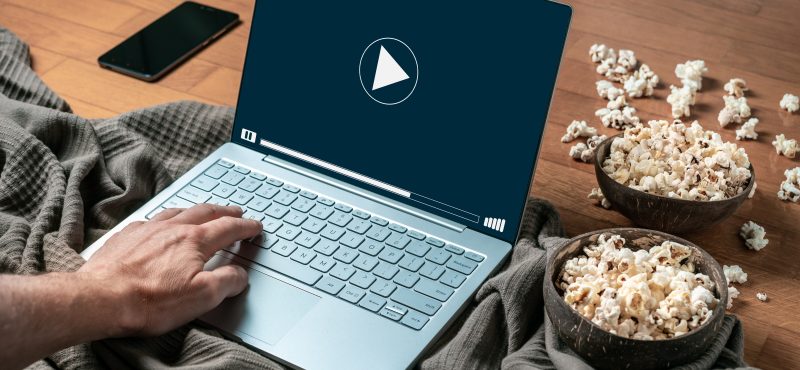Streaming video has been the savior of the pandemic. Thanks to the convenience and choice of streaming services through high-speed internet, we have been able to binge our favorite series, watch a movie or three, and keep up our learning with documentaries and other educational content. And unlike the old days of DVDs and downloads, streaming is always available, with a wide variety of content suitable for all ages.
When we stream a program, we usually take for granted that it is safe and private. And most of the time, it is. But unlicensed services and pirated content can put us at risk in a number of different ways – often, without our even noticing it. Don’t worry, we’ve got you covered with some tips on how to avoid online piracy and keep your streaming safe for the entire family.
Two primary risks to using unlicensed streaming services
Streaming is great: we can watch what we want, when we want, without ads and across devices. But sometimes, in the search for something in particular, we come across an unlicensed site and are tempted to stream from there. And that’s when the problems begin.
According to the consumer-protection site Stream Safely, there are two primary kinds of risks to unlicensed streaming services. The first is that these sites tend to not include parental or other kinds of controls. In practice, this means that children’s and adult programming is treated the same, allowing it to be viewed without restrictions by anyone. Not only does this mean that minors could access violent or pornographic content, it also means that any advertisements run on these sites could be similarly unsuitable for younger viewers.
The second risk has to do with the threat of attacks. When you visit an unlicensed streaming website, an annoying series of pop-up ads usually appear before any content can be accessed. But the threat goes beyond pop-ups to include more serious dangers. Malware, or malicious software, can infect your device in a number of different ways, including spyware that tracks your activity and reports sensitive information to outsiders, trojans that allow a computer to be controlled remotely and make it ripe for identity theft, and ransomware that locks or encrypts files until a ransom is paid. And once one device is infected, every other device that shares your network – including phones, computers, iPads, and other smart devices – is also at risk.
Free is not free
A ruined computer or stolen identity is hardly worth the risk of watching one show or movie. But there are other problems to unlicensed streaming services. Service is often unreliable, with poor-quality streams, buffering issues, and programs that cut out partway through. Worse still, pirated services do not pay royalties to artists for the work that appears on their sites. This means that creators and producers receive lower profits over time, which translates into less and lower-quality programming for all. The same applies when we share passwords with friends and family instead of acquiring a multi-user package.
Fortunately, there are ways to protect yourself. Safeguard your personal information; use computer-generated passwords and change them often; be sure to install trustworthy anti-virus and anti-malware software. But the fact remains that even the best anti-malware service is unlikely to be fully effective against the latest dangers deployed by hackers, whose job it is to stay one step ahead of your defenses. Ultimately, the best way to stay safe is to avoid unlicensed sites and stream with fully trustworthy services, like Disney+ and Paramount+.
Security for all
When pursued safely, streaming information and entertainment is one of the most important features of broadband connectivity. Beyond advocates every day for stronger privacy and piracy laws, but understanding how to use the internet safely is the best way to protect yourself and your loved ones. Learn more by visiting Beyond!
